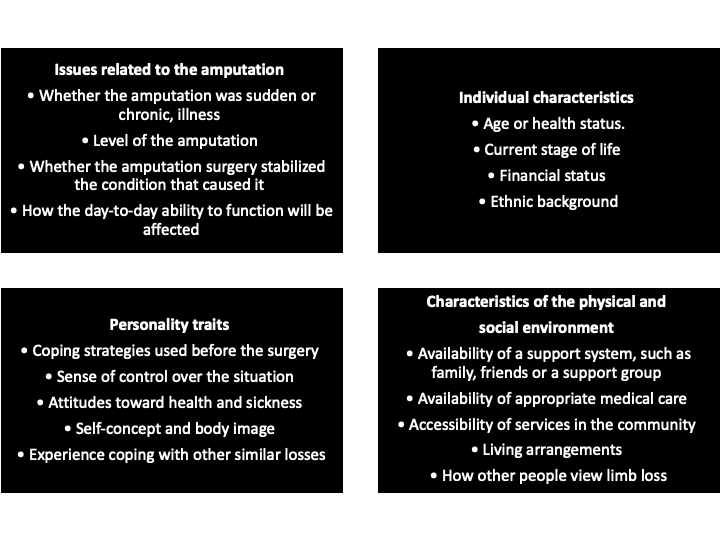What is recovery?

Recovery looks different for different people. The time it takes for one to recover from an experience like an amputation may be different from another individual. It should be stressed that this is a work in progress.
There are six signs of recovery (Livneh & Antonak, 1997):
- A sense of balance in emotions and relationships
- Awareness of abilities and limitations
- Positive self-concept and a sense of accomplishment
- Ability to get around in the environment
- Participation in social, vocational and/or recreational activities
- Setting priorities.
Many things affect recovery from any life change including amputation. These fall into four broad categories: 1) issues related to the amputation, 2) individual characteristics, 3) personality traits and 4) characteristics of the physical and social environment. Keep this in mind as you’re talking to the person with whom you’re visiting.

Instructor Notes:
Concepts: Key Concepts to Cover
- Recovery is demonstrated uniquely in each person. There are no definitive steps
- The 6 signs of recovery
- What the 6 are and what they look like
- What impedes recovery
- Issues related to the amputation
- Individual characteristics
- Personality traits
- Characteristics of the physical and social environment
- How issues related to the amputation can impede recovery
- How individual characteristics can impede recovery
- How personality traits can impede recovery
- How characteristics of the physical/social environment can impede recovery
Reflective Exercise Facilitation:
- Ask the class: In your own personal amputation experience, what was the greatest barrier to recovery? (Slide 31)
- Ask anyone who wants to volunteer to share their answer to raise their hands

